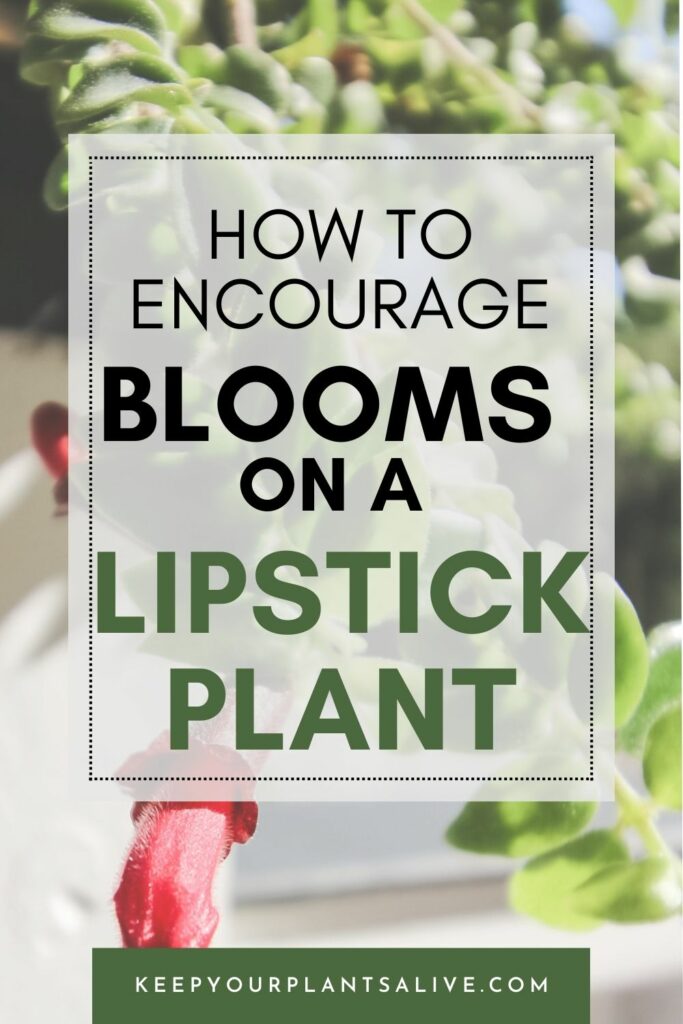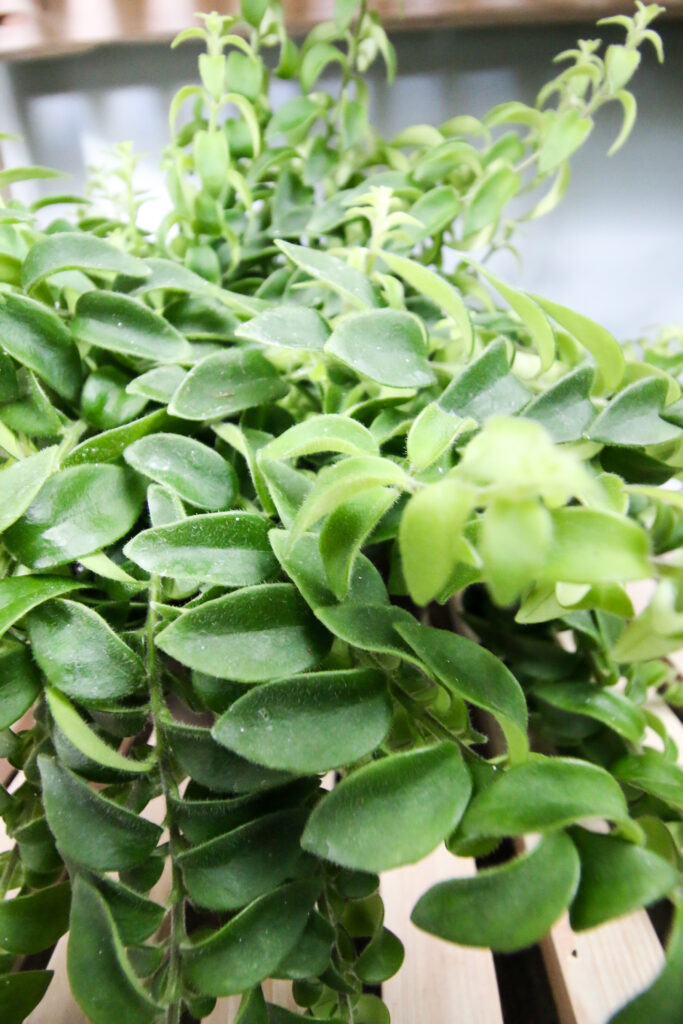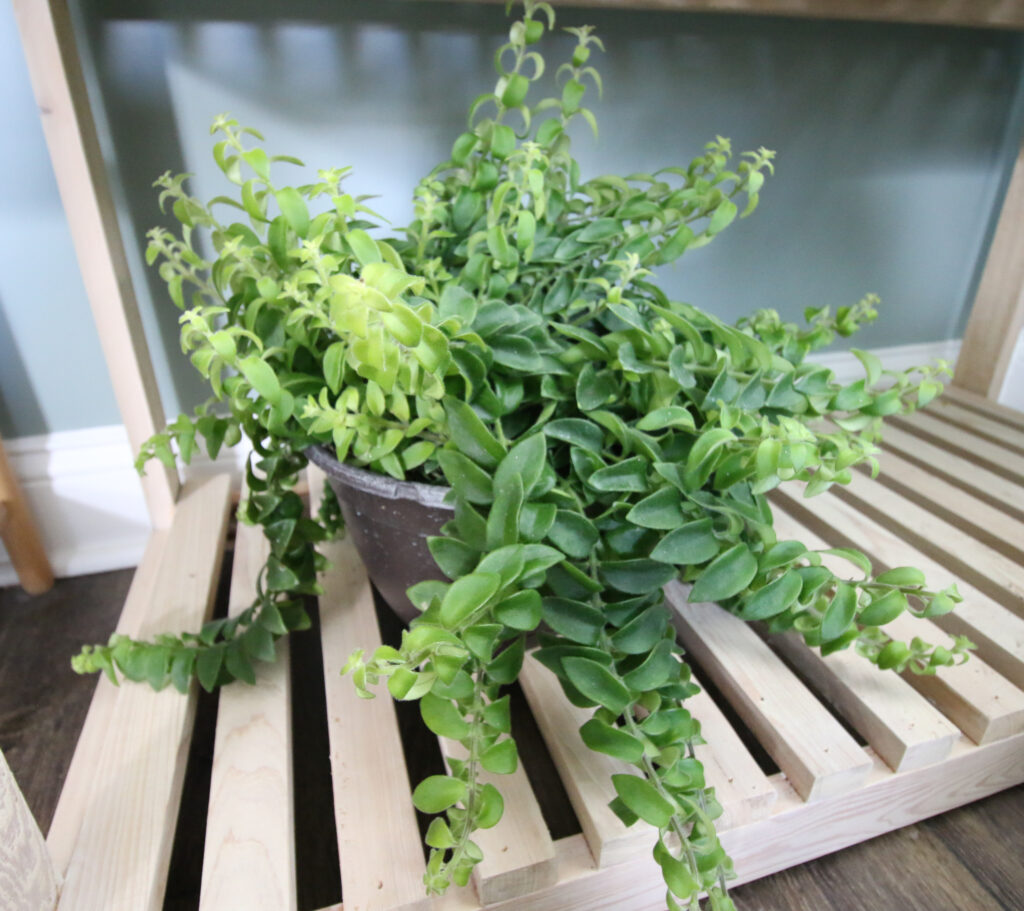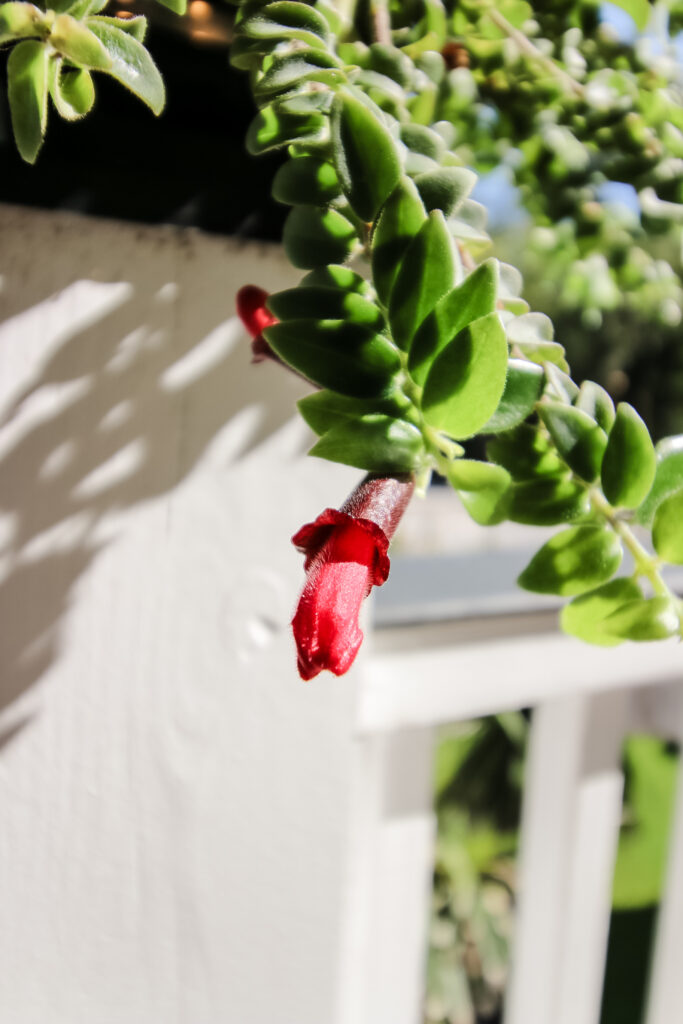Is your lipstick plant not producing flower? Here are a ton of tips for how to encourage a lipstick plant to bloom!
The Lipstick Plant (Aeschynanthus radicans) is a popular green leafy houseplant. What is most interesting about the lipstick plant is its unique, vibrant red tubular flowers.
They are bright red and shaped like a tube of lipstick - hence the name.
These flowers are GORGEOUS and exciting to see. So, if your plant is not producing flowers, it can be a bummer.
Let's talk about the lipstick plant, what makes it bloom, and how to encourage blooms on your plant!

Understanding the Lipstick Plant
The lipstick plant is a bushy plant with glossy green leaves. It grows fairly quickly and is a full, busy plant with long branches.
Because of these branches, they make great hanging or trailing houseplants.
However, these plants often take time to mature before blooming.
Ideal Growing Conditions
It is super important to provide the right environment for your Lipstick Plant.
Lighting
Lipstick plants need bright, indirect light. One of the top causes of lack of blooms in insufficient light.
Place your lipstick plant near a bright window but not in direct sunlight, which can burn the leaves.
Temperature
The preferred temperature range for these plants is between 65°F to 75°F or 18°C to 24°C.
Humidity
It is important for lipstick plants to maintain proper humidity levels (around 50-60%). You can increase humidity by using a humidity tray or misting.
I put my plant outdoors in the summer, where it is super steamy. But, remember that your HVAC can dry it out, especially when the heat runs in the winter!

Proper Watering Techniques
Appropriate watering is crucial for encouraging blooms. Here are some best practices for watering your lipstick plant.
Watering Frequency
Allow for the top inch of soil to dry out before watering thoroughly. Water until water drains out the drainage holes to be sure it got a good soaking.
Water Quality
If possible, use filtered or room-temperature rain water to avoid shocking the plant.
Root Health
Drainage holes are essential to help preventing overwatering, which can lead to root rot and the death of your plant.
Especially if you keep this plant outside where it will get rained on, you have to have holes in the pot for excess water to drain away.

Pruning and Maintenance
Pruning your lipstick plant will help to keep it healthy and to encourage blooming.
Pinching Tips
You can pinch back the plant to encourage branching, which can lead to more flowering stems.
To do this, simply use your thumb and forefinger to gently grasp the growing tip of a stem between two leaves. Gently squeeze and twist the tip until it snaps off cleanly.
This not only encourages new growth from the node just below the pinch but also stimulates the plant to produce more lateral branches, increasing the likelihood of abundant blooms.
Be sure to sterilize your pruning tools before use to prevent the spread of disease, and always remove only a small portion of the plant at a time to avoid stressing it too much.
Deadheading
Deadheading, a simple yet effective practice, involves the removal of spent or withered flowers from your Lipstick Plant.
By snipping or pinching off these faded blooms, you're helping the plant conserve energy that would otherwise go into seed production.
Instead, it redirects this energy into the growth of new buds and blooms.
This not only enhances the overall appearance of the plant but also encourages a prolonged flowering period, ensuring your Lipstick Plant remains vibrant and beautiful throughout its blooming season.
Leaf Health
It is super important to maintain healthy foliage to support overall plant vigor. Check on your plant regularly, so you can monitor if it seems soggy or dry, burnt or not getting enough sun.
Quick reactions to problems will keep it as healthy as possible!

Fertilizing Strategies
Fertilizing is the best way to provide essential nutrients for flowering.
Fertilizer Selection
The right type of fertilizer for Lipstick Plants is typically a balanced, water-soluble fertilizer. Look for a formulation with roughly equal proportions of nitrogen (N), phosphorus (P), and potassium (K) - often represented as N-P-K on the fertilizer packaging.
This balance ensures that your plant receives the essential nutrients it needs for healthy growth and vibrant flowering.
In addition to the N-P-K ratio, consider using a fertilizer that contains micronutrients like iron, magnesium, and calcium, which are crucial for overall plant health.
Frequency
Always follow the instructions on your specific fertilizer. You want to avoid over-fertilizing is that can kill your plant. Under-fertilizing might result in slower growth, but it won't die from it.
You typically want to fertilize once every 4-6 weeks in the warm growing season. Don't fertilize over the winter.

Patience and Expectations
It's important to have patience, as Lipstick Plants may take time to mature and bloom, with some variations based on individual plant health and conditions.
Once the plant starts to bloom, it may produce flowers sporadically rather than continuously. Try to monitor when it is happy and keep those conditions coming!
Lipstick plants are a beautiful addition to any houseplant collection. With these tips and a little patience, you will be seeing those beautiful red flowers in no time!
Any more questions about the lipstick plant?
Thanks for reading!


Hey there, I'm Morgan, a houseplant enthusiast from sunny Charleston, South Carolina. Growing up surrounded by my mom's lush orchids and African violets, I discovered the magic of bringing nature indoors. Thanks to the pandemic, I delved deeper into houseplants, discovering their power to uplift moods and transform spaces. I'm here to spill all my secrets, helping you pick the perfect houseplant - and make it happy. Let's keep your plants alive, together! 😊

